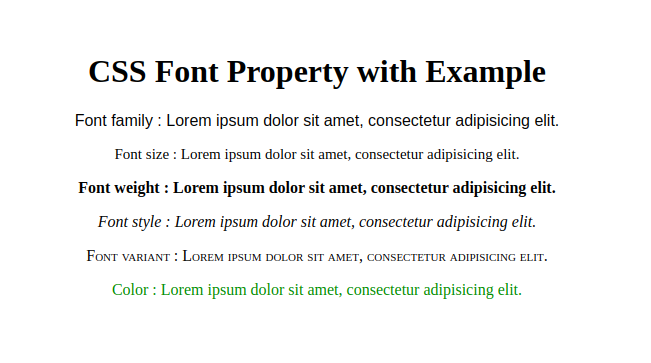

Browser implementations sometimes set values other than what is defined in the CSS specification.

It also shows the default values for those CSS properties. You can also view info on an individual CSS property in the spec, or in any comprehensive CSS reference, and it will usually tell you if that property is inherited by default. The following table shows which CSS properties (that we’ve seen) are inherited by child elements from their parents. inherit: This font-style property is used to inherit the current property from its parent element.

There doesn’t seem to be a single definitive source that lists all CSS properties that inherit, but below is a list that’s probably correct, based on a few sources: List of CSS Properties that are Inherited See the Pen CSS Inheritance and Shorthand by SitePoint ( on CodePen. Therefore, in this case, if you want the parent font shorthand to be inherited while still making sure that the paragraph remains bold, you will have to use the longhand font-weight property. For example, fonts, when we set the font-family to the body element, all other element inside the body tags get.

Some other properties make more sense to not be inherited. This helps us to specify the style of a particular element explicitly. Some CSS properties, such as color or font-family, are automatically inherited, but others, such as display or margin, aren’t.The inherit keyword should work on all CSS properties, though. inherit This keyword applies the value of the element’s parent, whether that makes sense or not. The font-style value will actually be reset to its initial value of normal. There are some CSS selectors that actually inherit styles from their parent element. The inherit, initial, and unset keywords are special values you can give to any CSS property. initial: Makes the property use its default value. optional: Gives the font face a very small block period and no swap period. fallback: Gives the font face a very small block period and a short swap period. swap: Gives the font face a very small block period and an infinite swap period. Here, the paragraph text won’t inherit the value of font-style from its container. Briefly hides the text until the font has fully downloaded. This can be achieved by setting the value of that property to inherit for the child element. In some cases, a specific property may not be inheritable but you might still want it to be inherited from the parent element. However, you would often prefer if the color of text or the font used for different child elements of a container was the same. For example, in addition to the examples discussed in the previous section, you probably don’t want all the children of an element to inherit the padding value of their parent. Note: The line-height property sets the space between lines. If one of the other values is missing, their default value are used. The font-size and font-family values are required. If you have ever styled the contents of a web page, it’s quite possible that you didn’t write a font style for every element that had to display text.Generally speaking, whether or not to make a property inheritable comes down to common sense. The font property is a shorthand property for: font-style. The body element in our HTML is the parent of.
A value (-) means that the default value is. This is why we generally use the element to attach our font styles.The main problems are unavailable fonts and mapping of (variant) glyphs to character positions. Keep declarations of font -related properties to a minimum, using inherit. Text and font properties in the Cascading Style Sheets serve to set the appearance of individual characters in a word or line of text. I say some cases because this kind of inheritance doesn’t always hold true. Reboot, a collection of element-specific CSS changes in a single file. This div has a margin-left of 5em, which is five times its font size.
When you style a parent element, in some cases the style will be inherited by its children elements.Truncate
Font Family Inherit
Font Size. For information on the inherit property, see the relevant section of the CSS2 Specs.
Why all this preamble and backstory? Because it’s important! Inheritance, cleverly demonstrated using human beings Ī child element can itself become parent to another element. When an HTML element is nested within another, the outer element is known as the parent, while the inner element is the child. Relationships exist in HTML, and these relationships make it possible for us to select and style the elements of a web page.


 0 kommentar(er)
0 kommentar(er)
